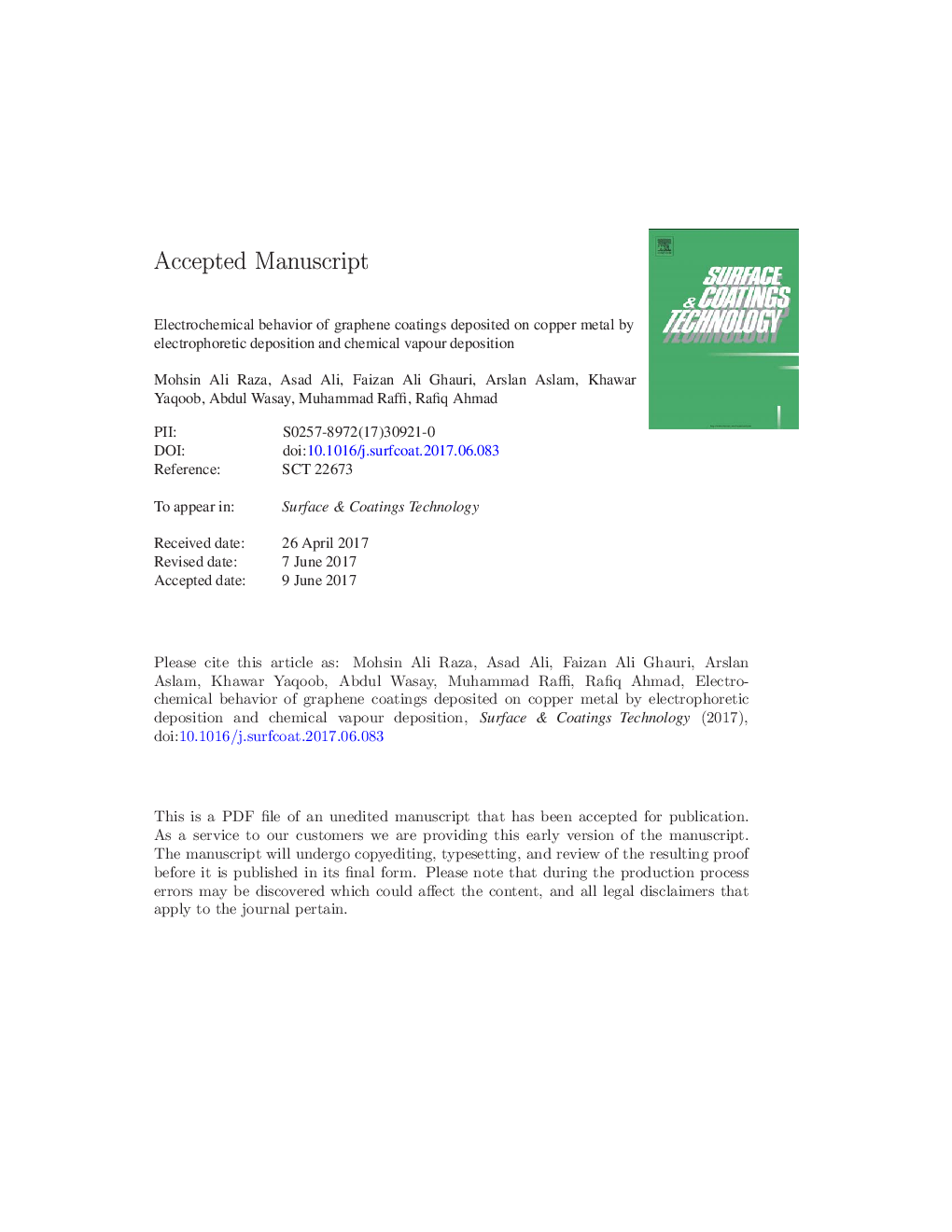| Article ID | Journal | Published Year | Pages | File Type |
|---|---|---|---|---|
| 8024715 | Surface and Coatings Technology | 2017 | 24 Pages |
Abstract
Graphene gains utmost importance for electronics, composites, sensors and biological applications due to its remarkable properties. The attributes such as two dimensional morphology, chemical inertness, high specific surface area and aspect ratio make graphene a promising candidate for anticorrosive coatings. Graphene has ability to retard electrochemical reactions occurring at metal-electrolyte interfaces by acting as a barrier to aggressive ions. This work aims to compare electrochemical performance of graphene coatings deposited on copper metal (Cu) by electrophoretic deposition (EPD) and chemical vapor deposition (CVD) technique. In the CVD process, graphene coatings were deposited on Cu by passing vapors of sodium ethoxide and argon gas (carrier gas) through a quartz tube at a temperature of 900 °C. In the EPD process, graphene was deposited on Cu, made as anode, from a suspension of graphene oxide and water. The coatings were characterized using scanning electron microscope (SEM), atomic force microscopy (AFM) and Raman spectroscopy. CVD-based graphene coatings had higher adhesion to the substrate than that of EPD. The electrochemical behavior of coatings was studied using Tafel analysis and electrochemical impedance spectroscopy techniques in 3.5% NaCl solution. The CVD-based graphene coatings performed better than EPD coatings and reduced corrosion rate by an order of magnitude than bare Cu. The comparative study of the electrochemical behavior of graphene coatings clearly demonstrates that graphene coatings deposited by CVD process are superior to coatings deposited by EPD.
Keywords
Related Topics
Physical Sciences and Engineering
Materials Science
Nanotechnology
Authors
Mohsin Ali Raza, Asad Ali, Faizan Ali Ghauri, Arslan Aslam, Khawar Yaqoob, Abdul Wasay, Muhammad Raffi,
